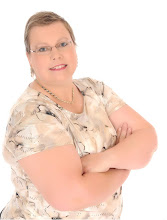Get to know a little more about Josi Kilpack, author of Devil's Food Cake, and what she thinks is important in a story. Be sure to read my interview with the author and review of the book!
I believe that the most important element of any story is the characters it is about. Whether the character is a rock or a pig or a prince of nations, they have to be interesting and relatable. The Harry Potter series is not about magic, it’s about a boy. The Da Vinci Code is not about cryptography, it’s about a professor and a cryptographer trying to solve a murder. Even novels that are plot driven (suspense, horror, etc.) are only there because something is happening to someone, therefore every other element of a story is based upon the characters—they are, therefore, the foundation of every story and because of that they deserve a great deal of attention during the creation process.
The process of ‘making a character’ is called characterization, and it’s part of the story making process that I absolutely love because I find real people fascinating and therefore it’s a lot of fun to use what I see in real life and translate it into a fictional person.
First, you have physical characteristics, or the exterior character; tall, short, fat, skinny, broad chested, stooped, limping. Then there is colors for hair, eyes, skin, lips. You have wide set eyes, almond shaped eyes, hook noses, pointy chins, long necks, droopy shoulders, pot bellies etc. Are they young or old, do they look their age, or are they defying mother nature so far? Literally hundreds of characteristics you can mix and match together in such a way to MAKE a person. For inspiration, I can go to the mall, a PTA meeting, church, or just a family reunion and blend together physical traits until it fits what I want. TV is probably the worst place for inspiration in this way because so many celebrities look similar in body size, shape, etc. Real life is the place to go to find those physical traits that give a visual. Amid the physical description is often their ethnicity, level of activity, and personal hygiene—each of which says a lot about them.
Then I get to move inside and work on the interior character. One of the first questions I ask is how does the character feel about their physical selves. Do they love being tall, do they hate having blue eyes, do they look like their parents, do they look nothing like their parents? How do people perceive them physically, and how does that perception affect them? Are they kind, greedy, secretive, boisterous; how do they react to people? Are they introverted or extroverted—hiding in a corner or the life of the party? The interior character is as limitless as the external character and, again, real life is a great pool of information. I look at how different people react in a crisis, how they engage in conversation and then wonder why they act differently than someone else. While the exterior is all about how they look, the interior is all about who they are.
Once I’ve developed the exterior and the interior, I get to paste together their histories. The exterior and interior get to come together here as I decide where they are from, what kind of family they were born into, how they have made it to this point in their lives. Did he go to college? Did she break off an engagement? I like knowing what their zodiac sign is, what the world was like when they were a child and what their parents did for a living that then influenced their lives.
Finally, when I have created these parts I work on the part of the character that works closest with the story; goals. What does the character want? Every story basically comes down to the characters pursuit for that goal and what obstacles they face along the way. The exterior, interior, and historical part of the character add up to equal their goals and desires in life and it’s those very things that, through the course of the story are thwarted.
I’ve filled out employment applications in the past so as to keep track of the information because I know once the story starts, I’ll forget.
And then the final thing I add is the flaws. No one likes to read about perfect people, therefore as a writer it’s important to have our characters have weaknesses, imperfections, and now and then a down right annoying habit or two. One of the most important parts of a story is the growth of the character, which means they have to have some part of them in need of improvement. It makes them relatable and real, which is the entire goal of fiction; to make the unreal feel like reality.
And yet, despite all the work and imagination, it’s inevitable—at least for me—that many things will change through the course of the story. My character might get taller or fatter or ruder or less educated as needed, usually to increase a conflict they are facing the story, but since I am in charge, I get to make and break the rules all I wan.
In the words of Robert Cormier “The beautiful part of writing is that you don’t have to get it right the first time, unlike, say, brain surgery.”
Subscribe to:
Post Comments (Atom)









No comments:
Post a Comment